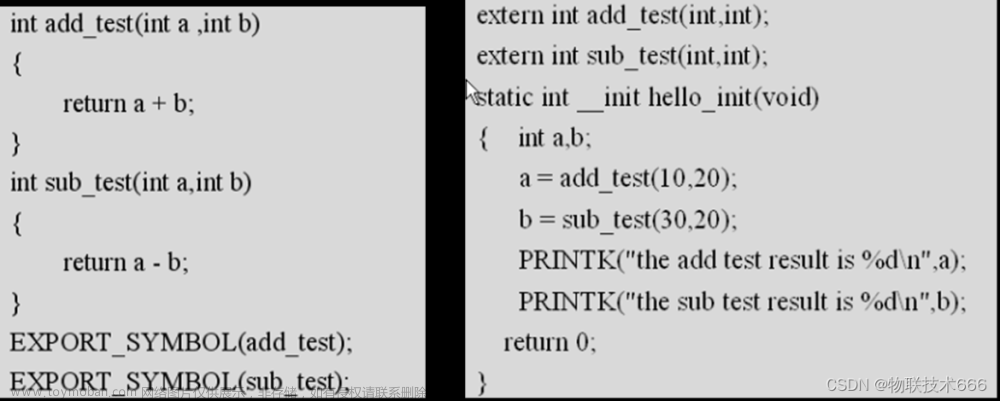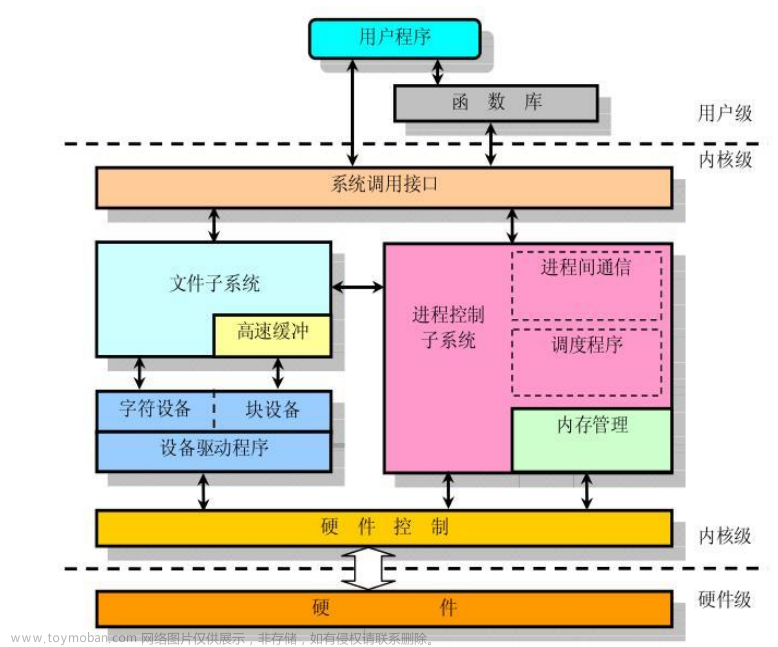使用Qemu模拟ARM vexpress-a9开发板
环境:ubuntu20.04 LTS
参考教材:《Linux设备驱动开发详解——基于最新的Linux4.0内核,宋宝华编著》
1.安装Qemu
sudo apt-get install zlib1g-dev libglib2.0-0 libglib2.0-dev qemu
安装完成后,在终端输入qemu连按tab键如果出现自动补齐就证明成功安装,如下图所示:
2.安装交叉编译环境
sudo apt-get install gcc-arm-linux-gnueabi
下面验证安装:
dpkg -l gcc-arm-linux-gnueabi

使用which指令查看安装路径:
3.1 编译linux内核
https://www.kernel.org/
这个网站可以下载到各个版本的内核源码,我们选择一个4.14的版本下载 longterm: 4.14.7。
使用以下命令下载一份完整的内核源码:
wget https://cdn.kernel.org/pub/linux/kernel/v4.x/linux-4.14.7.tar.xz
解压缩:
tar xvJf linux-4.14.7.tar.xz
编译linux:
cd linux-4.14.7
make CROSS_COMPILE=arm-linux-gnueabi- ARCH=arm vexpress_defconfig
#make distclean
#make menuconfig
#make zImage -j8
#make dtbs -j8
make all -j8
可以看看arch/arm/boot/zImage是否存在,如果不存在则说明编译出错。在个人编译的过程中发现通过命令行指定交叉编译器前缀好像不管用,可以尝试直接修改Makefile来指定编译前缀。如下:
#ARCH ?= $(SUBARCH)
ARCH = arm
#CROSS_COMPILE ?= $(CONFIG_CROSS_COMPILE:"%"=%)
CROSS_COMPILE = arm-linux-gnueabi-
上面注释的是原有的。
3.2 编译busybox
下载1.35.0版本的busybox:
wget https://busybox.net/downloads/busybox-1.35.0.tar.bz2
解压缩:
tar xf busybox-1.35.0.tar.bz2
解压busybox之后,输入以下命令来编译busybox:
cd busybox-1.35.0/
make defconfig
make CROSS_COMPILE=arm-linux-gnueabi- -j8
make install CROSS_COMPILE=arm-linux-gnueabi- -j8
编译后的文件在_install目录下,如下:
3.3 新建脚本来制作镜像(切换到busybox的上级目录)
mkdir -p rootfs/{dev,etc/init.d,lib}
touch rootfs/etc/init.d/rcS
#这里用双引号可能会报错
echo -e '#!/bin/sh\n' > rootfs/etc/init.d/rcS
cp busybox-1.35.0/_install/* -r rootfs/
sudo cp -P /usr/arm-linux-gnueabihf/lib/* rootfs/lib/
sudo mknod rootfs/dev/tty1 c 4 1
sudo mknod rootfs/dev/tty2 c 4 2
sudo mknod rootfs/dev/tty3 c 4 3
sudo mknod rootfs/dev/tty4 c 4 4
sudo chown root:root -R rootfs/*
sudo chmod 777 rootfs/etc/init.d/rcS
qemu-img create -f raw disk.img 512M
mkfs -t ext4 ./disk.img
mkdir -p tmpfs
sudo mount -o loop ./disk.img tmpfs/
sudo cp -r rootfs/* tmpfs/
sudo umount tmpfs
file disk.img
运行上述命令之后,可以得到一个disk.img的文件,这就是系统镜像。
4 启动虚拟的arm开发板
sudo chmod 777 disk.img
#下面的路径注意改为自己的实际路径
qemu-system-arm -M vexpress-a9 -m 512M -kernel linux-4.14.7/arch/arm/boot/zImage -dtb linux-4.14.7/arch/arm/boot/dts/vexpress-v2p-ca9.dtb -nographic -append "root=/dev/mmcblk0 rw console=ttyAMA0" -sd disk.img
上面的命令很长,可以新建一个shell脚本来运行。其中-kernel 指定内核文件路径,-dtb 指定设备树的路径 ,-sd就是镜像了。
最后运行一下上面的命令,最后的结果如下:文章来源:https://www.toymoban.com/news/detail-845907.html
WARNING: Image format was not specified for 'disk.img' and probing guessed raw.
Automatically detecting the format is dangerous for raw images, write operations on block 0 will be restricted.
Specify the 'raw' format explicitly to remove the restrictions.
pulseaudio: set_sink_input_volume() failed
pulseaudio: Reason: Invalid argument
pulseaudio: set_sink_input_mute() failed
pulseaudio: Reason: Invalid argument
Booting Linux on physical CPU 0x0
Linux version 4.14.7 (lzq@lzq-Parallels-Virtual-Platform) (gcc version 9.4.0 (Ubuntu 9.4.0-1ubuntu1~20.04.1)) #1 SMP Fri Aug 11 14:08:25 CST 2023
CPU: ARMv7 Processor [410fc090] revision 0 (ARMv7), cr=10c5387d
CPU: PIPT / VIPT nonaliasing data cache, VIPT nonaliasing instruction cache
OF: fdt: Machine model: V2P-CA9
Memory policy: Data cache writeback
CPU: All CPU(s) started in SVC mode.
percpu: Embedded 16 pages/cpu @9fbae000 s36428 r8192 d20916 u65536
Built 1 zonelists, mobility grouping on. Total pages: 130048
Kernel command line: root=/dev/mmcblk0 rw console=ttyAMA0
log_buf_len individual max cpu contribution: 4096 bytes
log_buf_len total cpu_extra contributions: 12288 bytes
log_buf_len min size: 16384 bytes
log_buf_len: 32768 bytes
early log buf free: 14992(91%)
PID hash table entries: 2048 (order: 1, 8192 bytes)
Dentry cache hash table entries: 65536 (order: 6, 262144 bytes)
Inode-cache hash table entries: 32768 (order: 5, 131072 bytes)
Memory: 509560K/524288K available (6144K kernel code, 402K rwdata, 1368K rodata, 1024K init, 168K bss, 14728K reserved, 0K cma-reserved)
Virtual kernel memory layout:
vector : 0xffff0000 - 0xffff1000 ( 4 kB)
fixmap : 0xffc00000 - 0xfff00000 (3072 kB)
vmalloc : 0xa0800000 - 0xff800000 (1520 MB)
lowmem : 0x80000000 - 0xa0000000 ( 512 MB)
modules : 0x7f000000 - 0x80000000 ( 16 MB)
.text : 0x80008000 - 0x80700000 (7136 kB)
.init : 0x80900000 - 0x80a00000 (1024 kB)
.data : 0x80a00000 - 0x80a649b8 ( 403 kB)
.bss : 0x80a6bd30 - 0x80a95ff4 ( 169 kB)
SLUB: HWalign=64, Order=0-3, MinObjects=0, CPUs=4, Nodes=1
Hierarchical RCU implementation.
RCU event tracing is enabled.
RCU restricting CPUs from NR_CPUS=8 to nr_cpu_ids=4.
RCU: Adjusting geometry for rcu_fanout_leaf=16, nr_cpu_ids=4
NR_IRQS: 16, nr_irqs: 16, preallocated irqs: 16
GIC CPU mask not found - kernel will fail to boot.
GIC CPU mask not found - kernel will fail to boot.
L2C: platform modifies aux control register: 0x02020000 -> 0x02420000
L2C: DT/platform modifies aux control register: 0x02020000 -> 0x02420000
L2C-310 enabling early BRESP for Cortex-A9
L2C-310 full line of zeros enabled for Cortex-A9
L2C-310 dynamic clock gating disabled, standby mode disabled
L2C-310 cache controller enabled, 8 ways, 128 kB
L2C-310: CACHE_ID 0x410000c8, AUX_CTRL 0x46420001
smp_twd: clock not found -2
sched_clock: 32 bits at 24MHz, resolution 41ns, wraps every 89478484971ns
clocksource: arm,sp804: mask: 0xffffffff max_cycles: 0xffffffff, max_idle_ns: 1911260446275 ns
Failed to initialize '/smb@4000000/motherboard/iofpga@7,00000000/timer@12000': -22
Console: colour dummy device 80x30
Calibrating local timer... 90.66MHz.
Calibrating delay loop... 663.55 BogoMIPS (lpj=3317760)
pid_max: default: 32768 minimum: 301
Mount-cache hash table entries: 1024 (order: 0, 4096 bytes)
Mountpoint-cache hash table entries: 1024 (order: 0, 4096 bytes)
CPU: Testing write buffer coherency: ok
CPU0: thread -1, cpu 0, socket 0, mpidr 80000000
Setting up static identity map for 0x60100000 - 0x60100060
Hierarchical SRCU implementation.
smp: Bringing up secondary CPUs ...
smp: Brought up 1 node, 1 CPU
SMP: Total of 1 processors activated (663.55 BogoMIPS).
CPU: All CPU(s) started in SVC mode.
devtmpfs: initialized
random: get_random_u32 called from bucket_table_alloc+0xfc/0x22c with crng_init=0
VFP support v0.3: implementor 41 architecture 3 part 30 variant 9 rev 0
clocksource: jiffies: mask: 0xffffffff max_cycles: 0xffffffff, max_idle_ns: 19112604462750000 ns
futex hash table entries: 1024 (order: 4, 65536 bytes)
random: fast init done
NET: Registered protocol family 16
DMA: preallocated 256 KiB pool for atomic coherent allocations
cpuidle: using governor ladder
hw-breakpoint: debug architecture 0x4 unsupported.
Serial: AMBA PL011 UART driver
OF: amba_device_add() failed (-19) for /memory-controller@100e0000
OF: amba_device_add() failed (-19) for /memory-controller@100e1000
OF: amba_device_add() failed (-19) for /watchdog@100e5000
irq: type mismatch, failed to map hwirq-75 for /interrupt-controller@1e001000!
10009000.uart: ttyAMA0 at MMIO 0x10009000 (irq = 38, base_baud = 0) is a PL011 rev1
console [ttyAMA0] enabled
1000a000.uart: ttyAMA1 at MMIO 0x1000a000 (irq = 39, base_baud = 0) is a PL011 rev1
1000b000.uart: ttyAMA2 at MMIO 0x1000b000 (irq = 40, base_baud = 0) is a PL011 rev1
1000c000.uart: ttyAMA3 at MMIO 0x1000c000 (irq = 41, base_baud = 0) is a PL011 rev1
OF: amba_device_add() failed (-19) for /smb@4000000/motherboard/iofpga@7,00000000/wdt@f000
SCSI subsystem initialized
usbcore: registered new interface driver usbfs
usbcore: registered new interface driver hub
usbcore: registered new device driver usb
Advanced Linux Sound Architecture Driver Initialized.
clocksource: Switched to clocksource arm,sp804
NET: Registered protocol family 2
TCP established hash table entries: 4096 (order: 2, 16384 bytes)
TCP bind hash table entries: 4096 (order: 3, 32768 bytes)
TCP: Hash tables configured (established 4096 bind 4096)
UDP hash table entries: 256 (order: 1, 8192 bytes)
UDP-Lite hash table entries: 256 (order: 1, 8192 bytes)
NET: Registered protocol family 1
RPC: Registered named UNIX socket transport module.
RPC: Registered udp transport module.
RPC: Registered tcp transport module.
RPC: Registered tcp NFSv4.1 backchannel transport module.
hw perfevents: enabled with armv7_cortex_a9 PMU driver, 5 counters available
workingset: timestamp_bits=30 max_order=17 bucket_order=0
squashfs: version 4.0 (2009/01/31) Phillip Lougher
jffs2: version 2.2. (NAND) © 2001-2006 Red Hat, Inc.
9p: Installing v9fs 9p2000 file system support
io scheduler noop registered (default)
io scheduler mq-deadline registered
io scheduler kyber registered
clcd-pl11x 10020000.clcd: PL111 designer 41 rev2 at 0x10020000
clcd-pl11x 10020000.clcd: /clcd@10020000 hardware, 1024x768@59 display
Console: switching to colour frame buffer device 128x48
clcd-pl11x 1001f000.clcd: PL111 designer 41 rev2 at 0x1001f000
clcd-pl11x 1001f000.clcd: /smb@4000000/motherboard/iofpga@7,00000000/clcd@1f000 hardware, 640x480@59 display
40000000.flash: Found 2 x16 devices at 0x0 in 32-bit bank. Manufacturer ID 0x000000 Chip ID 0x000000
Intel/Sharp Extended Query Table at 0x0031
Using buffer write method
40000000.flash: Found 2 x16 devices at 0x0 in 32-bit bank. Manufacturer ID 0x000000 Chip ID 0x000000
Intel/Sharp Extended Query Table at 0x0031
Using buffer write method
Concatenating MTD devices:
(0): "40000000.flash"
(1): "40000000.flash"
into device "40000000.flash"
libphy: Fixed MDIO Bus: probed
libphy: smsc911x-mdio: probed
smsc911x 4e000000.ethernet eth0: MAC Address: 52:54:00:12:34:56
isp1760 4f000000.usb: bus width: 32, oc: digital
isp1760 4f000000.usb: NXP ISP1760 USB Host Controller
isp1760 4f000000.usb: new USB bus registered, assigned bus number 1
isp1760 4f000000.usb: Scratch test failed.
isp1760 4f000000.usb: can't setup: -19
isp1760 4f000000.usb: USB bus 1 deregistered
usbcore: registered new interface driver usb-storage
rtc-pl031 10017000.rtc: rtc core: registered pl031 as rtc0
IR NEC protocol handler initialized
IR RC5(x/sz) protocol handler initialized
IR RC6 protocol handler initialized
IR JVC protocol handler initialized
IR Sony protocol handler initialized
IR SANYO protocol handler initialized
IR Sharp protocol handler initialized
IR MCE Keyboard/mouse protocol handler initialized
IR XMP protocol handler initialized
mmci-pl18x 10005000.mmci: Got CD GPIO
mmci-pl18x 10005000.mmci: Got WP GPIO
mmci-pl18x 10005000.mmci: mmc0: PL181 manf 41 rev0 at 0x10005000 irq 34,35 (pio)
mmc0: new SD card at address 4567
input: AT Raw Set 2 keyboard as /devices/platform/smb@4000000/smb@4000000:motherboard/smb@4000000:motherboard:iofpga@7,00000000/10006000.kmi/serio0/input/input0
ledtrig-cpu: registered to indicate activity on CPUs
usbcore: registered new interface driver usbhid
usbhid: USB HID core driver
mmcblk0: mmc0:4567 QEMU! 512 MiB
aaci-pl041 10004000.aaci: ARM AC'97 Interface PL041 rev0 at 0x10004000, irq 33
aaci-pl041 10004000.aaci: FIFO 512 entries
oprofile: using arm/armv7-ca9
NET: Registered protocol family 17
9pnet: Installing 9P2000 support
Registering SWP/SWPB emulation handler
rtc-pl031 10017000.rtc: setting system clock to 2023-09-02 16:09:03 UTC (1693670943)
ALSA device list:
#0: ARM AC'97 Interface PL041 rev0 at 0x10004000, irq 33
input: ImExPS/2 Generic Explorer Mouse as /devices/platform/smb@4000000/smb@4000000:motherboard/smb@4000000:motherboard:iofpga@7,00000000/10007000.kmi/serio1/input/input2
EXT4-fs (mmcblk0): couldn't mount as ext3 due to feature incompatibilities
EXT4-fs (mmcblk0): Filesystem with huge files cannot be mounted RDWR without CONFIG_LBDAF
EXT2-fs (mmcblk0): error: couldn't mount because of unsupported optional features (2c0)
EXT4-fs (mmcblk0): couldn't mount as ext3 due to feature incompatibilities
EXT4-fs (mmcblk0): mounted filesystem with ordered data mode. Opts: (null)
VFS: Mounted root (ext4 filesystem) readonly on device 179:0.
Freeing unused kernel memory: 1024K
random: crng init done
Please press Enter to activate this console.
此时按Enter就可以运行模拟arm开发板的shell了,结果如下: 文章来源地址https://www.toymoban.com/news/detail-845907.html
文章来源地址https://www.toymoban.com/news/detail-845907.html
到了这里,关于Linux设备驱动开发(一) 使用Qemu模拟ARM vexpress-a9开发板的文章就介绍完了。如果您还想了解更多内容,请在右上角搜索TOY模板网以前的文章或继续浏览下面的相关文章,希望大家以后多多支持TOY模板网!














